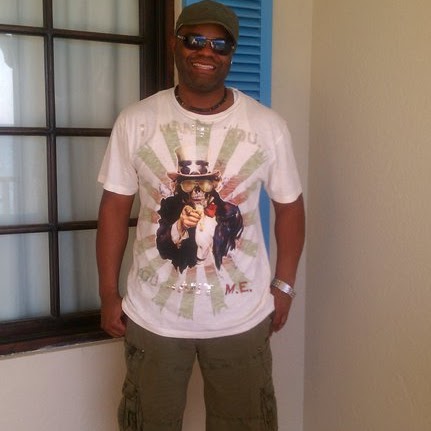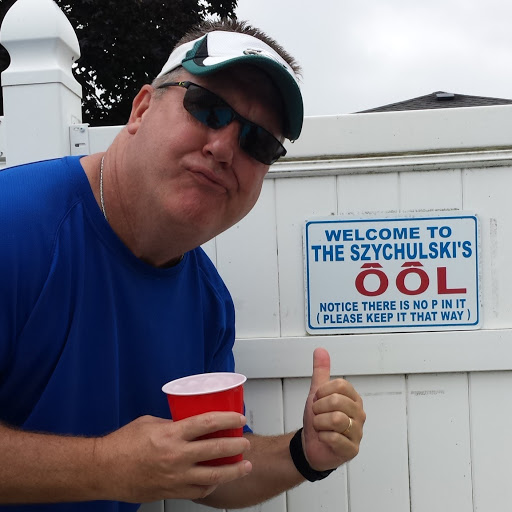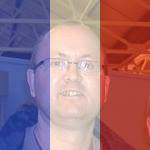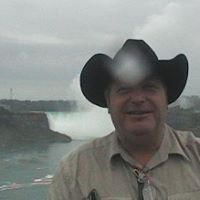Frederick P Robinson
age ~77
from Glendale, AZ
- Also known as:
-
- Frderick P Robinson
- Fred P Robinson
- Fredrick P Robinson
Frederick Robinson Phones & Addresses
- Glendale, AZ
- Phoenix, AZ
- Greer, AZ
- 4902 W Dahlia Dr, Glendale, AZ 85304 • 6236802085
Work
-
Company:Army - Fort Bliss, TXAug 2006
-
Position:Sgt 1st class army cargo spec
Education
-
School / High School:Eastern Arizona College Thatcher- Thatcher, AZ1995
-
Specialities:Certificate
Skills
All Army forklift 5k -50k • truck driver Army recrut. type computer ...
Ranks
-
Licence:Virginia - Authorized to practice law
-
Date:1973
Emails
Lawyers & Attorneys

Frederick H. Robinson Jr. - Lawyer
view sourceLicenses:
Virginia - Authorized to practice law 1973
Resumes

Frederick Robinson Peoria, AZ
view sourceWork:
Army
Fort Bliss, TX
Aug 2006 to Aug 2011
Sgt 1st Class Army cargo Spec Building Maint
Glendale, AZ
Oct 2003 to Dec 2005
Customer Service Phoenix Tent Rentals
Phoenix, AZ
Nov 1998 to Sep 2003
Customer Service Representative/Dispatcher/Ware... Mod-A-Can
Phoenix, AZ
Nov 1997 to Nov 1998
Mechanical Assembler Pima Community College
Tucson, AZ
Mar 1996 to May 1997
Assessment Assistant
Fort Bliss, TX
Aug 2006 to Aug 2011
Sgt 1st Class Army cargo Spec Building Maint
Glendale, AZ
Oct 2003 to Dec 2005
Customer Service Phoenix Tent Rentals
Phoenix, AZ
Nov 1998 to Sep 2003
Customer Service Representative/Dispatcher/Ware... Mod-A-Can
Phoenix, AZ
Nov 1997 to Nov 1998
Mechanical Assembler Pima Community College
Tucson, AZ
Mar 1996 to May 1997
Assessment Assistant
Education:
Eastern Arizona College Thatcher
Thatcher, AZ
1995
Certificate
Thatcher, AZ
1995
Certificate
Skills:
All Army forklift 5k -50k ,truck driver Army recrut. type computer skill an much more
Name / Title
Company / Classification
Phones & Addresses
Managing
Pikeops, LLC
FGR ENTERPRISES, LLC
Us Patents
-
Reactive Ion Etch Process For Surface Acoustic Wave (Saw) Device Fabrication
view source -
US Patent:51064715, Apr 21, 1992
-
Filed:Apr 2, 1990
-
Appl. No.:7/502728
-
Inventors:Jeffrey L. Galvin - Mesa AZ
Frederick J. Robinson - Scottsdale AZ
David M. Yee - Phoenix AZ -
Assignee:Motorola, Inc. - Schaumburg IL
-
International Classification:C23F 100
-
US Classification:20419235
-
Abstract:A dry etch process allows fabrication of very small SAW electrodes (less than 1 micron wide) on LiNbO. sub. 3 (lithium niobate) or quartz substrates. In the process, analuminum (Al) layer is disposed on the substrate, and a photoresist layer is applied and exposed in the appropriate pattern. The wafer is then placed in an RIE where the Al is dry etched using a plasma containing chlorine and fluorine. The photoresist is then removed by an oxygen plasma. The oxygen also operates to replace the chlorine ions. By using this process, very precisely shaped electrodes can be formed.
-
Method For Obtaining Submicron Features From Optical Lithography Technology
view source -
US Patent:48013501, Jan 31, 1989
-
Filed:Dec 29, 1986
-
Appl. No.:6/947069
-
Inventors:Robert J. Mattox - Tempe AZ
Frederick J. Robinson - Scottsdale AZ -
Assignee:Motorola, Inc. - Schaumburg IL
-
International Classification:B44C 122
C03C 1500
H01L 21306 -
US Classification:156643
-
Abstract:A method for the construction of submicron features using optical lithography technology. A material is deposited on a surface to be etched, this material is partially etched through using optical lithography technology. Sidewalls are deposited to reduce the size of this etched area to the submicron size desired. The etch of the layer is then completed resulting in a submicron mask for the substrate below.
-
Method For Detecting The End Point Of A Plasma Etching Reaction
view source -
US Patent:43404561, Jul 20, 1982
-
Filed:Nov 2, 1979
-
Appl. No.:6/090767
-
Inventors:Frederick J. Robinson - Scottsdale AZ
Clarence J. Tracy - Tempe AZ -
Assignee:Motorola, Inc. - Schaumburg IL
-
International Classification:H01L 21306
-
US Classification:204192E
-
Abstract:A method for removing photoresist from a substrate. A substrate to be stripped of photoresist is placed in a metal substrate holder or boat which is subsequently loaded into a plasma reactor. The holder is placed in contact with one electrode of the plasma reactor. The plasma reactor is evacuated and a hydrogen bearing gas is injected into the reactor at a rate to maintain the pressure between 0. 1 and 10 Torr. The photoresist coated substrate is heated to a temperature between 100. degree. C. and 225. degree. C. Power is applied to the plasma reactor to create a hydrogen plasma which reacts with and removes the photoresist. During the removal operation the reflected power from the reactor is monitored to detect the end point of the plasma-photoresist reaction.
-
Method For Removing Photoresist By Hydrogen Plasma
view source -
US Patent:42015790, May 6, 1980
-
Filed:Jun 5, 1978
-
Appl. No.:5/912615
-
Inventors:Frederick J. Robinson - Scottsdale AZ
Clarence J. Tracy - Tempe AZ -
Assignee:Motorola, Inc. - Schaumburg IL
-
International Classification:G03C 500
C23F 102 -
US Classification:430323
-
Abstract:A method for removing photoresist from a substrate. A substrate to be stripped of photoresist is placed in a metal substrate holder or boat which is subsequently loaded into a plasma reactor. The holder is placed in contact with one electrode of the plasma reactor. The plasma reactor is evacuated and a hydrogen bearing gas is injected into the reactor at a rate to maintain the pressure between 0. 1 and 10 Torr. The photoresist coated substrate is heated to a temperature between 100. degree. C. and 225. degree. C. Power is applied to the plasma reactor to create a hydrogen plasma which reacts with and removes the photoresist. During the removal operation the reflected power from the reactor is monitored to detect the end point of the plasma-photoresist reaction.
-
Method Of Making A Semiconductor Device Having A Low Permittivity Dielectric
view source -
US Patent:55916767, Jan 7, 1997
-
Filed:Mar 16, 1995
-
Appl. No.:8/405056
-
Inventors:Henry G. Hughes - Scottsdale AZ
Ping-Chang Lue - Scottsdale AZ
Frederick J. Robinson - Scottsdale AZ -
Assignee:Motorola, Inc. - Schaumburg IL
-
International Classification:H01L 213105
-
US Classification:437195
-
Abstract:A semiconductor device having electronic circuitry formed in a semiconductor substrate (11) and separated from an overlying metal interconnect layer (18,18') using a fluorinated polymer dielectric (14,14'). The fluorinated polymer layer (14,14') may be formed directly on metallic surfaces, or formed on a semiconductor or non-metallic surface using an adhesion promoter (13,13'). Once formed, the fluorinated polymer layer (14,14') can be patterned to provide vias, and covered with a patterned metal interconnect layer (18,18').
-
Semiconductor Device Having A Low Permittivity Dielectric
view source -
US Patent:54422370, Aug 15, 1995
-
Filed:Feb 4, 1994
-
Appl. No.:8/191736
-
Inventors:Henry G. Hughes - Scottsdale AZ
Ping-Chang Lue - Scottsdale AZ
Frederick J. Robinson - Scottsdale AZ -
Assignee:Motorola Inc. - Schaumburg IL
-
International Classification:H01L 2342
H01L 2344 -
US Classification:257759
-
Abstract:A semicondutor device having electronic circuitry formed in a semiconductor substrate (11) and separated from an overlying metal interconnect layer (18, 18') using a fluorinated polymer dielectric (14,14'). The fluorinated polymer layer (14,14') may be formed directly on metallic surfaces, or formed on a semiconductor or non-metallic surface using an adhesion promoter (13,13'). Once formed, the fluorinated polymer layer (14,14') can be patterned to provide vias, and covered with a patterned metal interconnect layer (18, 18').
Medicine Doctors

Frederick Campbell Robinson
view sourceSpecialties:
Pediatrics
General Practice
General Practice
Education:
University of Tennessee (1961)
Googleplus

Frederick Robinson
Work:
Classic Army - Soldier (1990)
About:
I've been in the Army for 20 years
Bragging Rights:
High School, One year of College, four children and the Army for 20 years

Frederick Robinson
Bragging Rights:
IM HUMBLE NOW!

Frederick Robinson

Frederick Robinson

Frederick Robinson

Frederick Robinson
Bragging Rights:
Have 3 kids

Frederick Robinson

Frederick Robinson
Youtube
Classmates

Frederick Robinson
view sourceSchools:
Newton High School Newton MS 1983-1987
Community:
Sonya Crowther, Joe Moore, Kathy Bugg

Frederick Robinson
view sourceSchools:
Calhoun County High School Edison GA 1987-1991
Community:
Dexter Neal

Frederick Robinson
view sourceSchools:
North High School Phoenix AZ 1963-1967
Community:
Kathy Norton, Virginia Zambrano

Frederick Robinson
view sourceSchools:
Boulder High School Boulder CO 1972-1976
Community:
Tim Cliffton, Diane Beeson

Frederick Robinson
view sourceSchools:
Loch Raven High School Baltimore MD 1994-1998
Community:
Marianne Clingan, James Koo, Lori Lowman

Frederick Robinson
view sourceSchools:
Carver High School Lexington Park MD 1957-1961
Community:
Thelma Jones, Bernard Carter, Robert Purnell

Frederick Robinson
view sourceSchools:
Mayo High School Darlington SC 1990-1994
Community:
Patti Tindal, Loretta James

Frederick Robinson
view sourceSchools:
Runge Junior Senior High School Runge TX 1969-1973
Community:
Gabriella Espericueta, Kristen Ramirez, Mary Schrade, Maurine Wright, Ann Harris

Frederick Dale Robinson
view source
Frederick Eugene Robinson
view source
Frederick Michael Robinson
view source
Frederick Freddy G Robinson
view source
Frederick Robinson
view source
Frederick Robinson
view source
Frederick Nottakeinglifef...
view source
Frederick Robinson
view sourceFlickr
Plaxo

Frederick Robinson
view sourceColdwell Banker Residential Brokerage
Get Report for Frederick P Robinson from Glendale, AZ, age ~77













